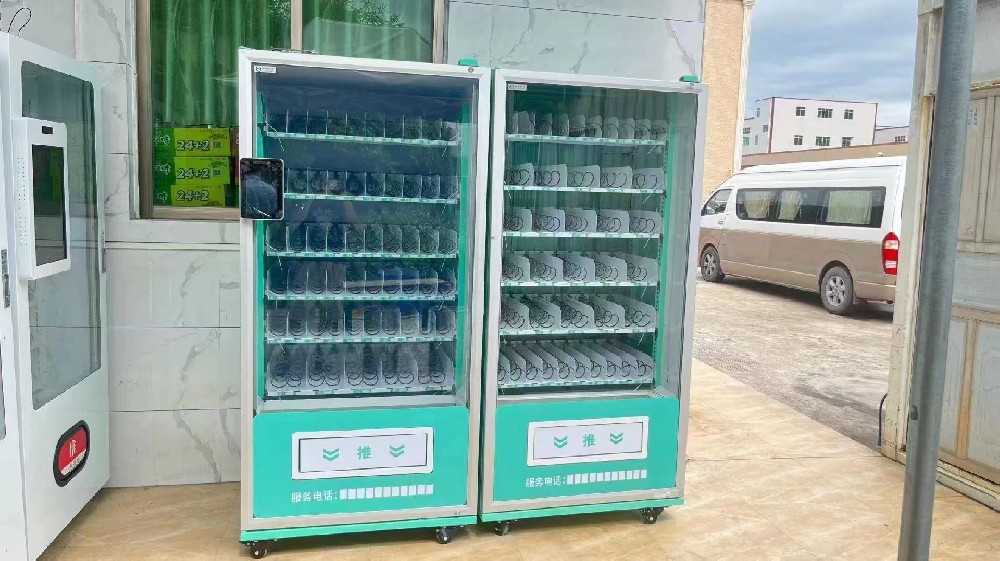In the stage of refined development of the vending machine industry, optimizing supply chain management, shaping a unique brand culture, and launching cross - border marketing collaborations are crucial paths to enhance operational quality and market competitiveness. The following presents brand - new operational considerations from these key aspects, aiming to help achieve efficient breakthroughs and sustainable development in operations.
I. Refined Supply Chain Management: The Core Path to Cost Reduction and Efficiency Enhancement
Supplier Deep Cooperation and Screening
Establish long - term strategic partnerships with high - quality suppliers. Regularly evaluate and screen suppliers, comprehensively considering multiple dimensions such as product quality, supply stability, price advantages, and after - sales service. For example, strictly review the production qualifications, hygiene standards, and quality inspection reports of food and beverage suppliers; for suppliers of equipment components, pay attention to their technological update capabilities and product compatibility to ensure the reliability of the supply chain source.
Dynamic Inventory Management and Optimization
Utilize intelligent inventory management systems to monitor changes in commodity inventory in real - time. Combine with sales data prediction models to accurately calculate the replenishment cycle and quantity of each commodity, avoiding inventory backlogs or shortages. For instance, set a relatively high safety stock for best - selling products with stable sales; for seasonal products or new products, adopt a replenishment strategy of small batches and multiple times to reduce inventory costs.
Logistics and Distribution Coordination and Upgrading
Integrate logistics resources and cooperate with professional logistics and distribution enterprises. Plan the optimal distribution routes according to the distribution areas of vending machines and replenishment requirements. Introduce intelligent dispatching systems to achieve efficient allocation of distribution vehicles and personnel. At the same time, use GPS positioning technology to monitor the distribution progress in real - time, ensuring that goods are delivered in a timely and accurate manner and improving replenishment efficiency.
II. In - depth Brand Culture Shaping: Enhancing User 认同感
Brand Story and Value Transmission
Explore the stories behind the brand, clarify the core brand values, and spread them through channels such as vending machine body advertisements, product packaging, and online promotions. For example, emphasize the brand positioning of "creator of convenient life" and tell the original aspiration and efforts of the enterprise to provide consumers with shopping experiences anytime and anywhere, triggering emotional resonance among consumers.
Visual Image Unification and Upgrading
Design a unified and recognizable brand visual image, including LOGO, color system, font style, etc., and apply it to all aspects such as the appearance of vending machines, product labels, and promotional materials. Regularly update and upgrade the brand visual image to maintain the freshness and fashion of the brand and enhance the brand image in the minds of consumers.
User Interaction and Brand Loyalty Cultivation
Strengthen interaction with users through methods such as member point systems, user evaluation feedback mechanisms, and brand - specific activities. For example, member points can be redeemed for special products or coupons to encourage users to actively participate in brand activities; respond to and handle user evaluations and suggestions in a timely manner, making users feel the attention and importance of the brand, thereby cultivating user loyalty to the brand.
III. Innovative Cross - border Marketing Linkages: Expanding New Market Opportunities
Exploration of Cross - industry Cooperation Models
Carry out cross - border cooperation with brands from different industries to achieve resource sharing and complementary advantages. For example, cooperate with well - known catering brands to launch co - branded packages; cooperate with popular IPs to create themed vending machines and sell limited - edition products. Through cross - border cooperation, attract the user groups of partner brands and expand the influence of one's own brand.
Online - offline Integrated Marketing
Combine online social media platforms with offline vending machine placement scenarios to carry out integrated marketing activities. Initiate topic discussions and lucky - draw activities online to guide users to consume at offline vending machines; set up entrances to participate in online activities by scanning codes on offline vending machines, such as participating in mini - games by scanning codes to win coupons, realizing the mutual conversion of online and offline traffic and enhancing marketing effectiveness.
Public Welfare Marketing and Fulfillment of Social Responsibilities
Combine marketing activities with public welfare undertakings to establish a good corporate social image. For example, donate a certain amount to public welfare projects for each product sold; place vending machines in poverty - stricken areas and sell daily necessities at low prices, while carrying out public welfare publicity. Through public welfare marketing, enhance the brand's social reputation and public recognition.
IV. Data - driven Decision - making Optimization: Achieving Precise Operations
Data Collection and Integration
Utilize the intelligent systems equipped on vending machines to comprehensively collect data such as user purchase behavior data, equipment operation data, and market environment data. Integrate and analyze these data to form multi - dimensional operation data reports, providing rich data support for decision - making.
Data Analysis and Insights
Use data analysis tools and algorithms to deeply mine the collected data, discover potential consumption trends, user needs, and operational problems. For example, optimize product display and promotion strategies by analyzing user purchase time periods and product combinations; carry out maintenance in advance and replace components by analyzing equipment failure data to reduce the failure rate.
Decision - making Optimization and Execution
Adjust operation strategies in a timely manner according to the results of data analysis, including product selection, pricing, and marketing activity planning. At the same time, establish a tracking and evaluation mechanism for the implementation effect of decisions, continuously optimize the decision - making process, and ensure the scientificity and effectiveness of operation decisions.
The above content provides new strategies for vending machine operation from multiple aspects. If you hope to further refine certain parts of the content or have other operational requirements, feel free to communicate with me at any time.



